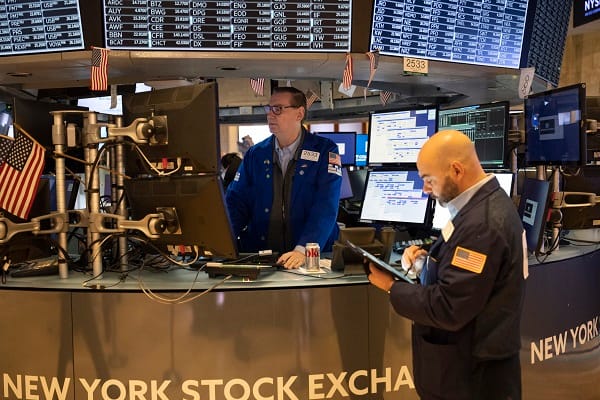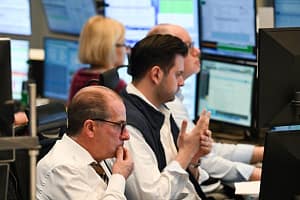The S&P 500 and Dow Jones indices turned sharply negative in afternoon trading on Friday, ahead of the release of the March jobs report, which could help determine the Federal Reserve’s path for future interest rate cuts.
The Dow Jones index dropped 128 points, or 0.3%, while the S&P 500 index fell by 1.2%, and the Nasdaq technology index recorded losses of 1.4%.
With all three major US stock indices declining by more than 1% each, the S&P 500 recorded its largest daily drop since February 13 on Thursday, as Federal Reserve officials adopted a cautious tone in their comments on interest rate cut expectations, while investors prepared to absorb the monthly US jobs report today, Friday.
I believe the markets also priced in comments from US President Joe Biden, who called for an immediate ceasefire in a call with Israeli Prime Minister Benjamin Netanyahu regarding the Gaza war yesterday. Oil prices rose amid current geopolitical tensions, adding negative pressure to the stock market.
All major sectors in the S&P 500 index declined during the day, led by a 1.7% drop in the technology sector.
In my view, market volatility has been influenced and uncertainty intensified in the stock markets due to comments made by Federal Reserve officials. Minneapolis Federal Reserve Bank President Neel Kashkari suggested at the central bank’s meeting last month cutting interest rates twice this year. Still, if inflation remains stubborn, there may be no need for any cuts this year.
I will provide further evidence of the strength of the labor market and inflation rates. Nonfarm payrolls for March are expected to decrease to 200,000 from 275,000 in February, while the unemployment rate is likely to remain steady at 3.9%.
I think the stock market declined today ahead of the jobs report release on Friday. The new job data will provide the latest gauge of economic resilience and economic pressure, with the potential to impact the Federal Reserve as markets price in a rate cut in June.
From my perspective, the sudden expansion in US manufacturing activities in March led to a bearish reaction on Wall Street at the start of the new quarter, as market participants slightly reduced their cautious bets in light of economic resilience.
It’s worth noting that manufacturers’ prices have reached their highest level in 20 months at 55.8 compared to 52.7 previously, which may raise some doubts about whether the inflation battle waged by the Federal Reserve is on the right track, as declines in commodity prices were the main driver of inflation slowdown during the past year. However, the likelihood of the Federal Reserve cutting interest rates in June is now 54%, compared to 64% a week ago, pushing the US dollar to its highest level in four months with recent rises in US Treasury bond yields.
Despite Federal Reserve officials in the United States ignoring higher-than-expected consumer price index readings in recent months and affirming that the path to its 2% inflation target would be challenging, monetary policy expectations and the timing of rate cuts will remain data-dependent in the future. This will undoubtedly raise the Fed’s conviction that the contractionary trend will continue. A series of labor market data will be released this week, with attention focused on any signs of improvement in labor conditions to pave the way for early policy easing.






Leave a Comment